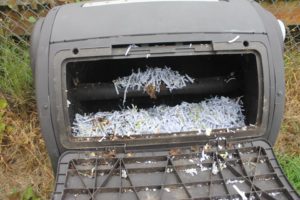As with any other type of nut tree that one undertakes to grow, pecan’s take a considerable amount of patience and skills, especially in their early years. To grow a tree for the nuts you will require several trees rather than just a single one, otherwise you will end up with a beautiful shade tree void of any nut production. Cross-pollination is required by these trees. The patience requires six to eight years of watching the tree slowly grow before seeing any nut appear on it. These trees also require a considerable amount of space since they grow as tall as 150 feet high, thus they between 35 and 50 feet per tree. Pecan trees are able to be cultivated in U.S. zones 6 through 9, thus with Delaware being in zone 7, we are right in the middle.
Well folks, unlike my usual procedure of buying fruit and vegetable from a grocery store to grow, I admit these were bought from a man who had a hobby of growing pecans. He was a local grower who raised trees on his property and he graciously agreed to sell me some of his crop. I was blessed to be able to purchase pecans from this local grower for something like two dollars per pound. I purchased several pounds and we had forgotten all about them until my wife rediscovered the bag recently.
The first thing to do is inspect the pecans which you have and select the largest and fullest ones you can find. Choose those with no damage from insects. Dispose of those pecans which exhibit insect damage. Now place them in a container of water for two days. Change the water constantly to provide oxygen.
In the natural process the pecan would drop from the tree and end up being buried in the soil. This process results in the seed overwintering and preparing to germinate in the springtime. This complete process is known as stratification.
Now place the nuts into a Ziploc bag and fill with damp vermiculite. It should only be damp to the touch and not soaking wet. Label and date the bag and place it into the refrigerator for a three-month period at 32 to 45 degrees. Checking the bag frequently to ensure that it does not dry out. If it becomes too dry, merely add a teaspoon of water to dampen it.
At the end of the three-month cold storage timeframe remove the seeds from the refrigerator and warm them to room temperature for one week. At the conclusion of the week soak them in water for 24 hours. The seeds should than start to split open which means they are ready to be planted. The roots of the pecan tree can be seen emerging from the split in the shell.
By now it should be March and the seeds have been stratified and soaked and you can plant them in moist soil at a depth of 4 inches. Plant three pecans in each mound to ensure they germinate. Upon germination, remove all but the healthiest-looking plant.
Generally, pecan enjoy a rich soil mixed with compost. These trees will grow at a rate of ½ inch per day. Locate a spot which receives full sun and where the soil can be kept moist. These trees are heavy drinkers. Place a vegetable cage over the plant to protect it from animals.
Water your plant every morning during its growing season and once a week water very deeply. A pecan tree will develop a deep root system. These roots will grow rapidly during its first few years of life. When the pecans root system is about 1 foot deep, the new pecan tree will rise to about 3 inches from the top of the nut and begin to spike up from the soil. Eventually these taproots for the pecan tree will go down a good four to six feet into the earth.
The location where you plan to grow your tree is important in order to avoid future problems. Issues such as cross-pollination, is it a sunny location with good soil, how are the surroundings, is there space for any future plantings? Once you have found the perfect location at the proper time you will want to weed the seedlings to about 35 feet apart. The trees at this time will likely ben about 18 inches tall. The pecan trees will grow slowly during their first couple of years however they should be left to grow for about a year. They will eventually reach a height of 70 feet at around 20 years of age.
When selecting which trees to keep only keep the healthiest and remember, you must grow at least two trees to get pecans on them. Now, here’s a hint that most people fail to know. Wrap your tree bottom with aluminum foil for the first couple of years in order to prevent sun scald. Keep the tree area free from weeds.
Tonight, I took one dozen pecans and placed them into a container of water, as can be seen by the photo. Now all I need to do is wait for two days and then place them in the refrigerator for 3 months.




